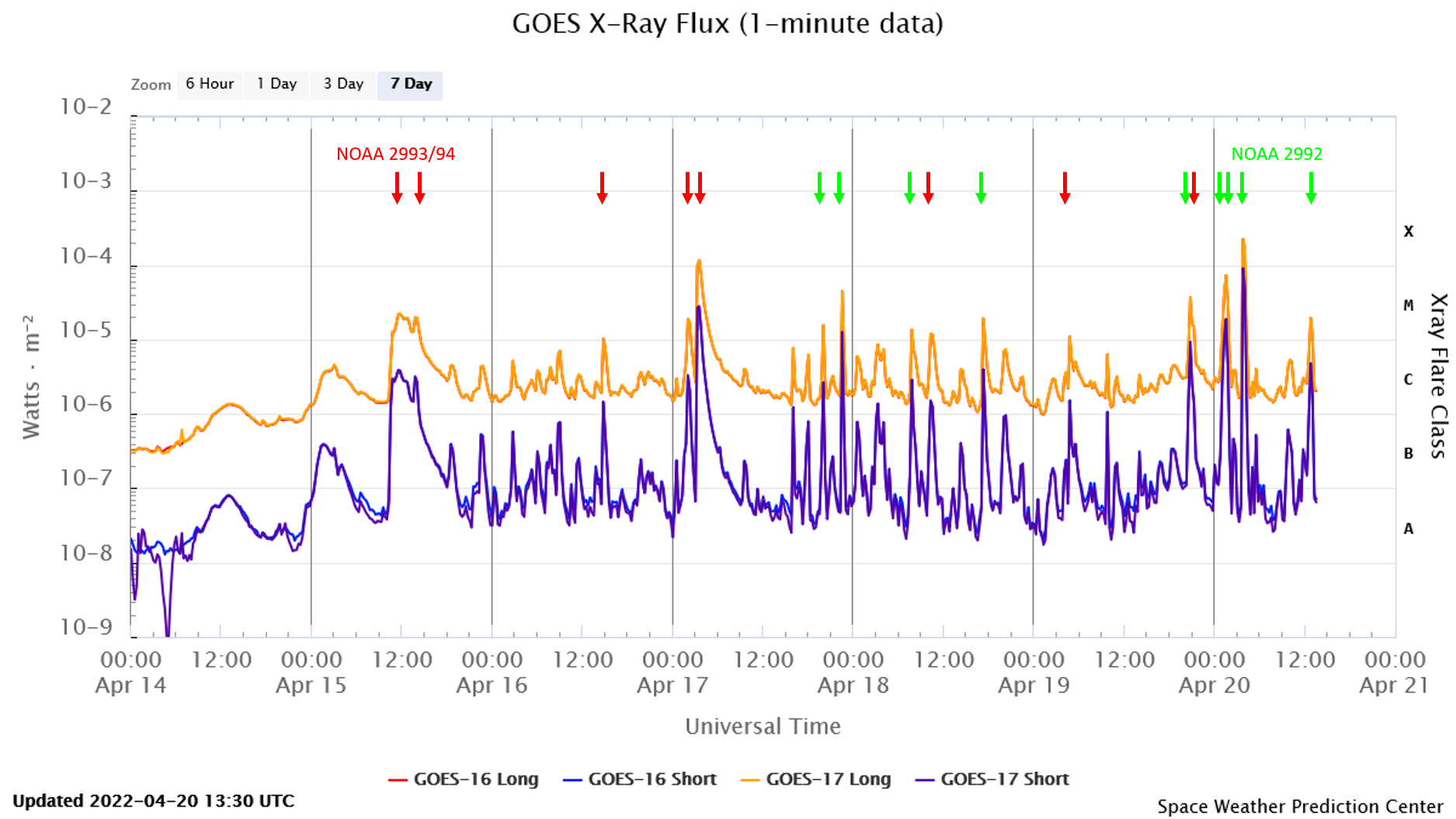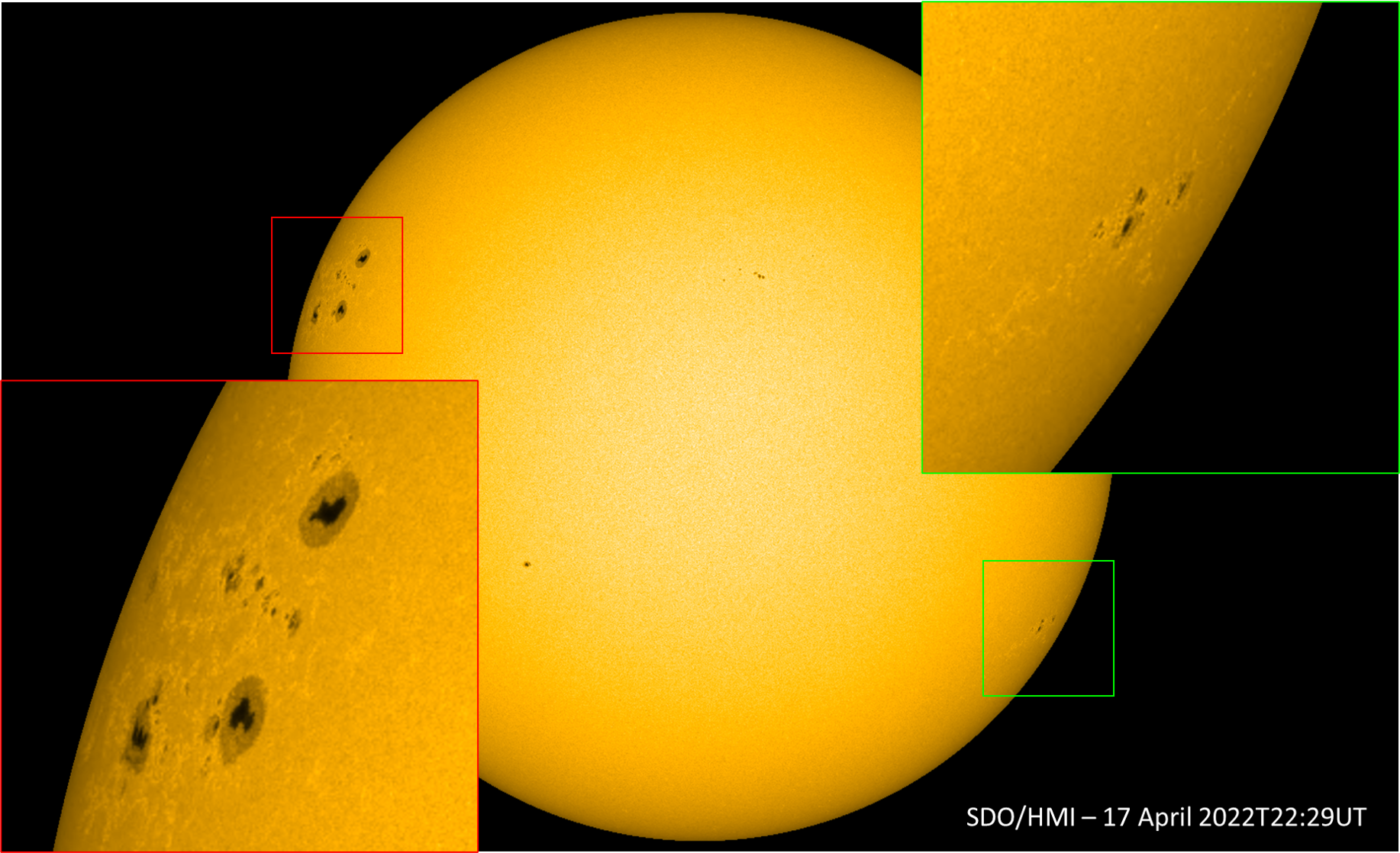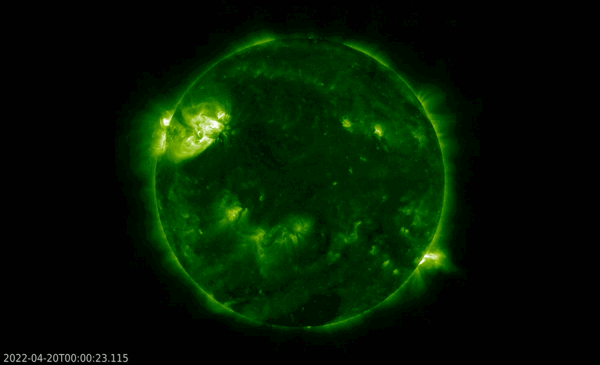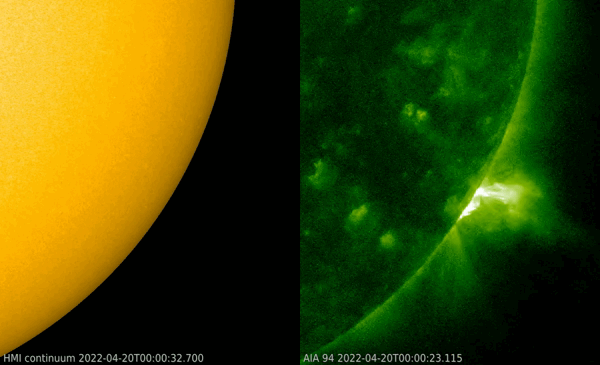After last week's high solar flare activity, which included an X-class flare on 17 April (see this STCE news item), solar flare production has continued at elevated levels. However, the source of these flares has gradually shifted from the impressive complex of sunspot regions NOAA 2993 and 2994 in the northeast solar quadrant towards a much tinier active region NOAA 2992 near the Sun's southwest limb. This can be seen in the annotated GOES x-ray curve underneath which covers the period from 14 April until noon 20 April. The flares produced by the NOAA 2993/94 complex are indicated in red, and by NOAA 2992 in green.

NOAA 2992 is certainly a far less prominent sunspot region than its big brothers NOAA 2993 and NOAA 2994. This can be seen in the SDO/HMI image underneath, taken late on 17 April when NOAA 2992 had started to produce its first M-class flares. Zooms of the 3 regions are inserted. Though NOAA 2992 was already near the solar limb, it could still be deduced from the available magnetograms that some mixed magnetic polarities were present. The last few white light images on 19 April seemed to indicate some renewed flux emergence near the trailing portion of the region, but little more could be said as the region rounded the solar limb just hours later.

Then early on 20 April, NOAA 2992 produced an X2.2 flare peaking at 03:57UT. It was preceded by an M7.2 flare (with some contribution from flaring activity in NOAA 2994) which peaked at 01:36UT, and an M1.2 event peaking at 01:14UT. The X2.2 flare is the strongest flare so far this solar cycle. This is all the more impressive, as the source region had already rotated over the Sun's southwest limb, and so part of the flaring site was hidden by the solar disk. The images underneath are SDO/AIA 094 images showing the Sun in extreme ultraviolet at temperatures of several million degrees from 00UT until 05UT. First is a full Sun clip, then a zoomed clip (right) with a white light image (left) showing the absence of any sizeable sunspot.


The flaring activity was associated with coronal waves (PROBA2/SWAP) and Type II radio bursts, indicative of coronal mass ejections (CMEs - see CACTus). However, these CMEs do not appear to be wide enough to have an earth-directed component. Over the next days, the behind-the-limb activity from NOAA 2992 is expected to dwindle down, but flares (M-class and an occasional X-class flare) from the NOAA 2993/94 complex remain certainly possible.






